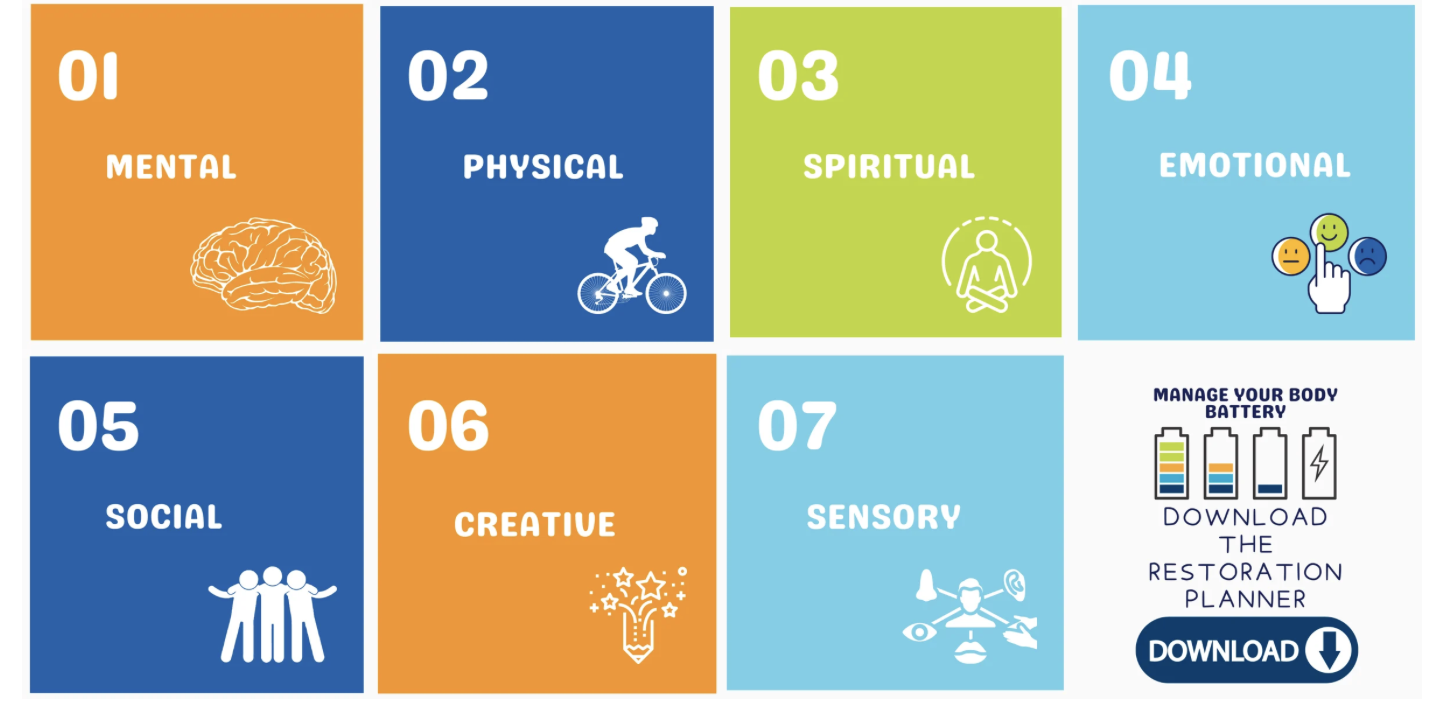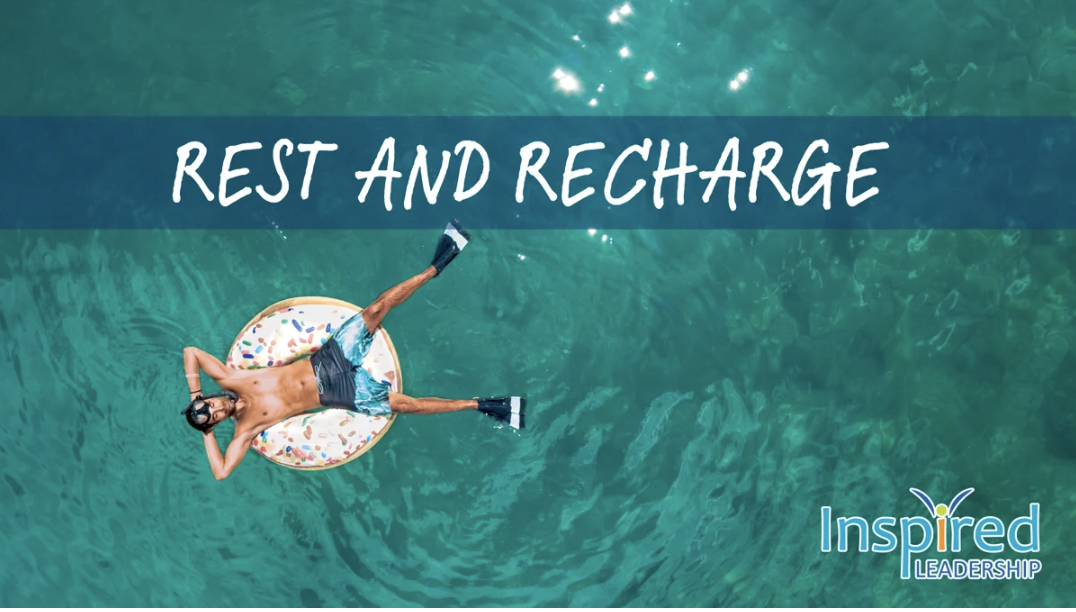You may have heard that letting your cell phone run down to 0% before recharging is bad for its overall battery life. This turns out to be a relevant metaphor for device users, too: it’s far better to recharge our own “batteries” regularly, rather than wait until we are totally depleted or burned out.
Download the Rest Summary & Planning Sheet
We may think of ourselves as machines who just need to be turned off and on again. But if taking time off comes only after “the blue-screen-of-death” or a total system shutdown, it could be a sign that you’re missing out on restorative rest. That is, the kind of rest that doesn’t just get you back up to (barely) functioning, but that enables you to thrive as a full human being.
The Seven Types of Rest is a model introduced by Dr Saundra Dalton-Smith, in a 2019 TED Talk entitled “The real reason why we are tired and what to do about it”. The seven types of rest might also be thought of as 7 aspects of a well-balanced life.

They are:
- Mental
- Physical
- Spiritual
- Emotional
- Social
- Creative
- Sensory
You can use the seven types firstly to diagnose where most of your energy is going, and then to identify activities or practices in each area that help you replenish your energy. The key point is to think of rest as restoration.
The kicker? We should be resting before we really need to. Here are a few key principles that could help us apply this model meaningfully:
It’s about range and frequency.
The power of this model is that it prompts us to identify a variety of restorative activities across the seven areas, rather than relying on only one kind of rest.
Another way of applying this concept is to do restorative activities that combine multiple areas. If you think about the kinds of activities that really leave you feeling reenergised, you’ll quite possibly find that they “tick multiple boxes”. For example, playing sport or gaming with friends is a way of giving yourself a physical and/or mental break, but also recharging socially.
However, if we can only get to do our restorative activities in the December break, we’re back to the 0% battery problem. In other words, combine things you can do occasionally (i.e. after hours, on weekends and holidays e.g. a hike) with shorter activities or practices that you can do often e.g. screen break.
It’s about combining active with passive restoration – and that includes doing less.
This model encourages us to recognise that rest can be active, and that energy is something we generate rather than simply expend. This can be very empowering. On the other hand, it might also seem ironically like resting means having to do more.
Yes, the invitation is to add new activities into your life – but some of those activities can be “passive”. For example, you might start exercising (active) as well as taking power naps (passive). More importantly, restoration is also about stopping doing certain things, protecting your energy, and setting up boundaries.
As an example: Let’s say socialising energises you, but certain people leave you feeling drained. You might protect your energy by limiting time spent with specific individuals or groups.
It’s about choice…
Most practically, this approach works because it gives you options – you should choose what works for you. Resting and re-energising will look different for everyone depending on style and preferences (e.g. introverts versus extroverts).
An important caveat is to try not to turn this model into a burdensome balancing act, or feel you must strive to cover all seven areas “just right”. Rather let it be a wake-up call for those who are constantly tired, and don’t know why. Instead of focusing on working harder and longer, focus on how to regularly restore your energy more purposefully and not default into lying on the couch with a remote in your hand thinking that is rest….
…and, finally, awareness.
We cannot identify what energises us and what depletes us if we cannot first recognise where our energy levels are in the first place. We all know we need to take breaks, but we won’t do so unless we also develop habits that prompt us to notice when we’re tired or frazzled. And a way to do this is to return to the body. Even though energy is not only physical, our bodies can be our best “energy messengers” – provided we are able to listen.
What you can do now
-
- Start small: After reading this article, simply shift to another kind of task or body position. Audit your energy, stand up, shake out, do a chore, or hug a family member.
-
- Plan ahead: As you plan your December break, incorporate elements from various rest categories.
-
- 2025 goals: Consider how you can build restorative practices into each month and week. Don’t just get back on the hamster wheel after December and press “repeat”. Download the 7-Types-of-Rest Resource and Planning Sheet for ideas and assistance.
Do you need to equip your organisation to lead themselves and others well? Download our brochure to find out how we can help.
Sources
TED Talk video: “The real reason we’re exhausted and what to do about it” – Saundra Dalton-Smith (TEDx Atlanta, 2019): https://www.youtube.com/watch?v=ZGNN4EPJzGk
Also article: https://ideas.ted.com/the-7-types-of-rest-that-every-person-needs/
Garmin content which gives insight into the science of energy recovery: 5 Reasons your Body Battery Says You’re Running Low




